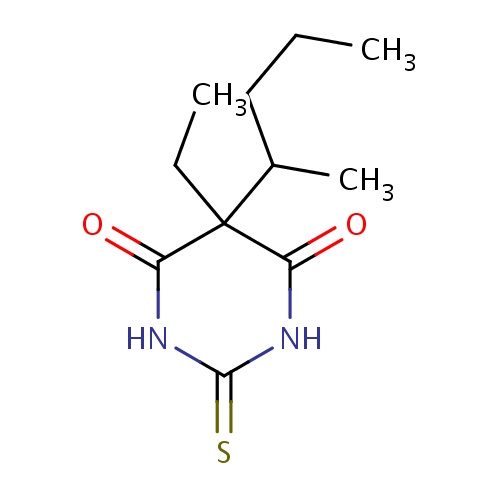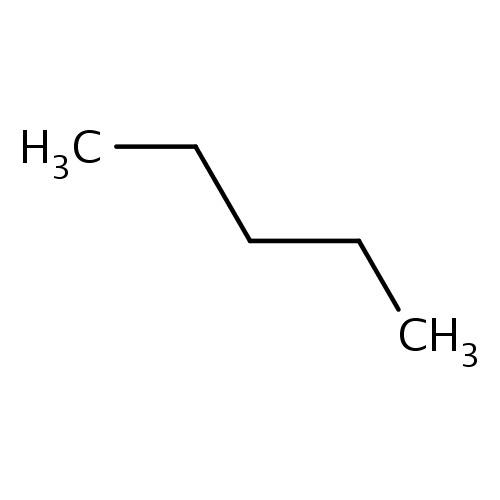
IUPAC name
5-ethyl-5-(pentan-2-yl)-2-sulfanylidene-1,3-diazinane-4,6-dione
SMILES
CCCC(C)C1(CC)C(=O)NC(=S)NC1=O
Compound class
Hypnotics and Sedatives; Anticonvulsants; Anesthetics, Intravenous; GABA Modulators; Anesthetics; Nervous System; Psycholeptics; Anesthetics, General; Barbiturates, Plain; CYP2E1 Inhibitors; CYP2E1 Inducers; CYP2E1 Inducers (strong); CYP3A4 Inhibitors;
Therapeutic area
For use as the sole anesthetic agent for brief (15 minute) procedures, for induction of anesthesia prior to administration of other anesthetic agents, to supplement regional anesthesia, to provide hypnosis during balanced anesthesia with other agents for analgesia or muscle relaxation, for the control of convulsive states during or following inhalation anesthesia or local anesthesia, in neurosurgical patients with increased intracranial pressure, and for narcoanalysis and narcosynthesis in psychiatric disorders.
Common name
Thiopental
IUPAC name
5-ethyl-5-(pentan-2-yl)-2-sulfanylidene-1,3-diazinane-4,6-dione
SMILES
CCCC(C)C1(CC)C(=O)NC(=S)NC1=O
INCHI
InChI=1S/C11H18N2O2S/c1-4-6-7(3)11(5-2)8(14)12-10(16)13-9(11)15/h7H,4-6H2,1-3H3,(H2,12,13,14,15,16)
FORMULA
C11H18N2O2S

Common name
Thiopental
IUPAC name
5-ethyl-5-(pentan-2-yl)-2-sulfanylidene-1,3-diazinane-4,6-dione
Molecular weight
242.338
clogP
3.162
clogS
-3.382
HBond Acceptor
3
HBond Donor
2
Total Polar Surface Area
90.29
Number of Rings
1
Rotatable Bond
4



